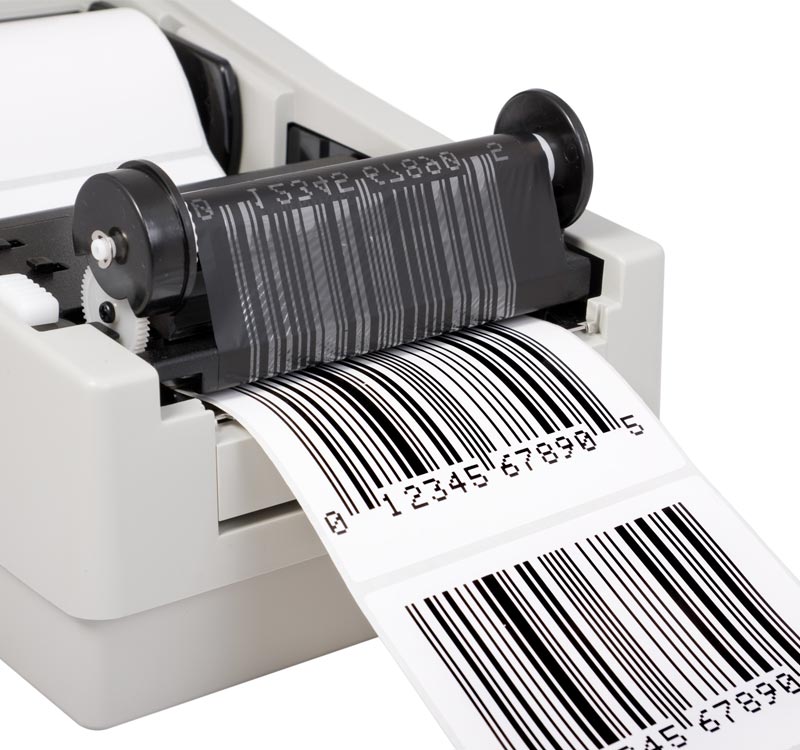What is the difference between thermal transfer labels and direct thermal labels?
The difference between direct thermal and thermal transfer labels is that direct thermal printing uses chemically treated, heat-sensitive/thermal media that reacts to turn black when in contact with the heat of the printhead, while thermal transfer printing uses a heated ribbon or film to produce durable, long-lasting images on a wide variety of non-heat sensitive/thermal coated materials.
The ink ribbon or film sits between the thermal printhead and the label material. The heat from the printhead causes the ribbon coating to transfer onto the label material creating the required image or text.
While direct thermal labels are predominantly used for short-term use their life can be extended by using coatings to protect the print image. Their lifespan is also determined by the application and environment the label is to be used within.
Summary
Direct Thermal Labels
- Direct thermal labels are made from heat-sensitive paper that has ink embedded within the label material.
- The image is generated as a result of the paper coming into contact with the hot temperature of the print head,
- The material changes colour before rapidly cooling, leaving behind the text or image.
- Being heat-sensitive material, direct thermal labels do not have a long shelf-life once printed and are therefore only recommended for a lifespan of around six to eight months, and if exposed to heat or light, the print will fade or the surrounding area become discoloured.
Additional information:
- Best for indoor & short-term print jobs
- Does not require a ribbon to print
- Fades faster when exposed to heat and UV light
- Only prints in black ink
Thermal Transfer Labels
- Thermal transfer (TT) printing requires a ribbon to print.
- The image is created by the thermal ribbon passing over the heated print head melting it onto the label material.
- This method produces a darker image/text for clearer, sharper images.
- These labels last for up to two years.
Additional information:
- The ribbon-type used is dependent on the material and the proposed application
- The shelf-life for these is up to two-years
- Handles exposure to sunlight, chemicals, and heat
Look out for our next article covering the different types of labels such as:
- Plain and printed standard labels
- Piggyback labels
- Blockout Labels
- Tactile labels
- Tamper proof/tamper-evident security labels
- Integrated labels
- Heat Resistant
- Cryogenic
- Inkjet
- Laser labels
